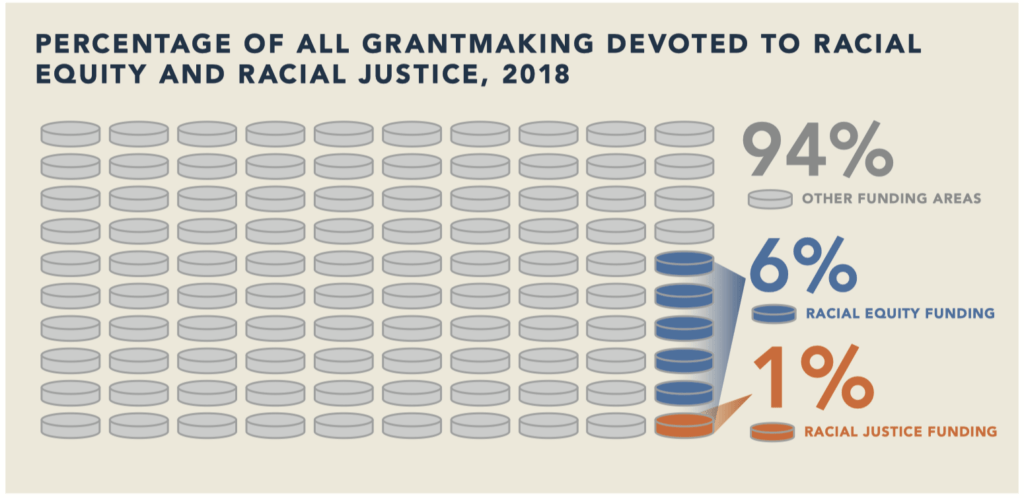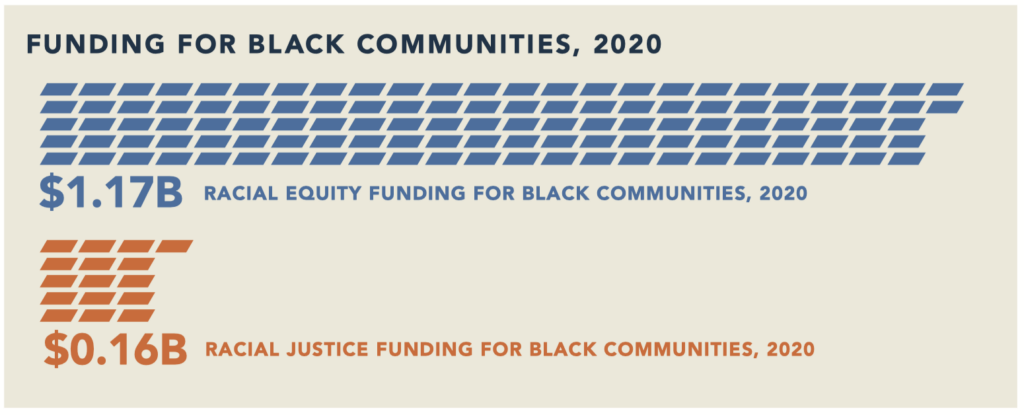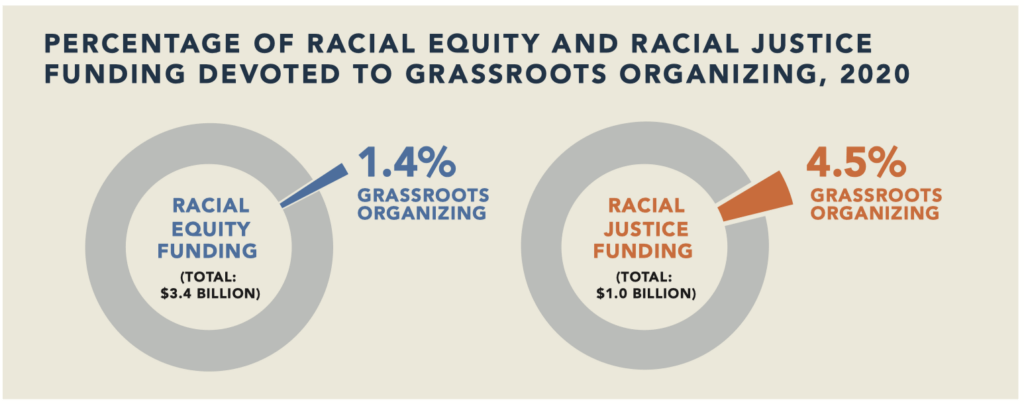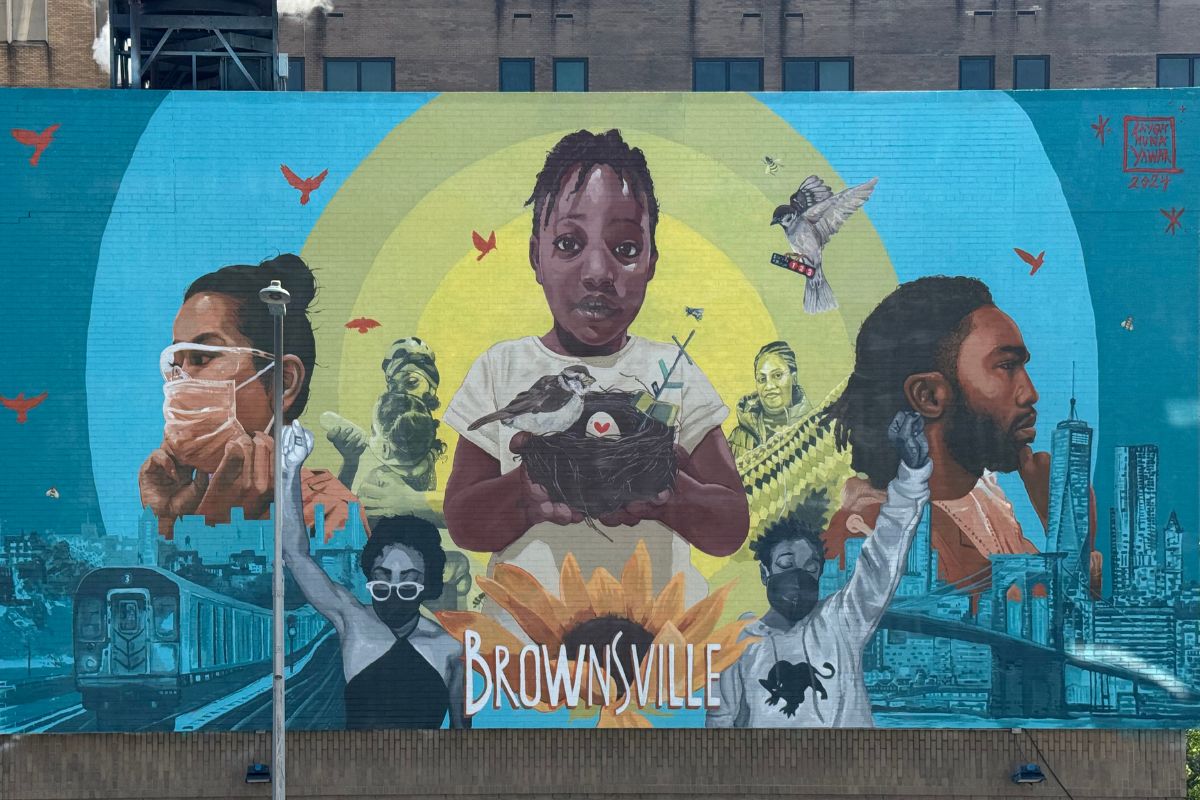
Contrary to popular belief, the uprisings of 2020 did not cause an enormous spike in funding for racial justice. It would be more accurate to say that there was a spike in pledges, solemn corporate PR statements, and misleading headlines, none of which translated to significant funding for the kind of Black-led, grassroots organizing that generated an unprecedented social response to racial injustice. These are the findings of an extensive 92-page report by the Philanthropic Initiative for Racial Equity (PRE), entitled Mismatched: Philanthropy’s Response to the Call for Justice.
The report stands out from others of its kind in three ways: It focuses on the number of actual grants awarded rather than grants pledged, analyzes trends over time by comparing 2020’s figures with figures from 2011 through 2018, and makes an important distinction between the concepts of racial equity and racial justice. Each of these nuances paints a full picture of why it is harmful to believe that philanthropy saw the light in 2020 and was motivated to invest in transformative change. In truth, there are major areas that philanthropists still need to improve in order to realize their full potential for supporting marginalized communities.
Understanding the difference between funding racial equity and funding racial justice is a good place to start. Racial equity constitutes programs and projects that focus on acknowledging and responding to racial differences in social outcomes. For a visual allegory, imagine scooping water out of a boat that has a hole in it. Racial justice, on the other hand, is sustainable power-building in communities of color—essentially, the work of plugging the hole in the boat. Most grants are awarded to support racial equity, fulfilling the immediate needs of disadvantaged populations but ignoring the systemic change required in order to empower them in the long term. In context, while only six cents of every philanthropic dollar awarded in 2018 went towards racial equity, a single penny went towards racial justice.

The Epidemic of Inflated Estimates
In those emotionally charged weeks following George Floyd’s murder by a Minneapolis policeman, there was an influx of businesses and foundations alike pledging large dollar amounts as part of their commitment to joining the fight against racial injustice. Media outlets and think-tanks were eager to count up all the pledges and subsequently report that Black-led organizations were now receiving astronomical support. The Wall Street Journal published an article in September 2020 claiming that there was $6.5 billion committed to achieving racial equity that year, dwarfing the roughly $3.3 billion of the previous eight years combined, and further indicating that most of these grants were going “specifically to nonprofits with Black leaders.” The PRE contests that this amount was “vastly overstated and mischaracterized.” Based on their analysis of the available data, there was $1.5 billion in awarded grants focused on racial equity in Black communities, a 50 percent increase compared to previous years, but nowhere near the scale of what is widely reported.

Furthermore, many of those intended pledges were allocated questionably. For example, Facebook issued a standard heartfelt statement, along with a press release detailing a staggering $1.1 billion committed to racial equity. The fine print? It would actually be $100 million in cash grants and ad credits for Black creators, nonprofits, and small businesses. The other billion dollars was allocated to “Black and diverse suppliers, including facilities, construction, and marketing agencies.” Likewise, although Microsoft made pledges of $929 million for racial equity, they indicated that $875 million of that was allocated to internal commitments, such as increasing spending on Black-owned suppliers.
Research shows that Facebook and Microsoft’s funding priorities are far from an anomaly. The Washington Post estimates that more than 90 percent of the $49.5 million in racial equity commitments made by the top 50 companies and their foundations following George Floyd’s murder were “allocated to loans or investments they could stand to profit from, more than half in the form of mortgages.”
Philanthropy’s Blind Spots
Private foundations, in turn, did no better than corporations in the administration of funds intended for “racial equity.” More than a third of the top 20 grant recipients for this category were organizations founded by white billionaires or corporations advancing their own theories of change for people of color. Among smaller scale white-led organizations, there was a tendency to use funding to diversify their ranks, and not for building power in underprivileged communities. Quite a small percentage of the overall funding was awarded to grassroots organizing, meaning that just a fraction of the promised billions actually ended up in the hands of Black and Brown movement leaders advancing racial justice.
Wealthy, white donors are also prone to financing initiatives that they deem most beneficial, ignoring the areas that movement leaders have identified as priorities. Education is well funded by a handful of extremely wealthy donors, but they operate with minimal input from movement leaders, setting goals and priorities that are often counterproductive to the needs of the community. Movement leaders want more focus on funding for issues such as voting rights and criminal justice reform, but philanthropists have barely heeded that call. These areas fall within the scope of racial justice because they involve grassroots organizing for sustainable movement building and systemic change, yet racial justice receives only 10 to 20 percent of racial equity funding, which ends up being one percent of all philanthropic funding.
Sign up for our free newsletters
Subscribe to NPQ's newsletters to have our top stories delivered directly to your inbox.
By signing up, you agree to our privacy policy and terms of use, and to receive messages from NPQ and our partners.
Grantmakers’ responses contrasting sharply with the demands of the movement is nothing new. Several years ago in Ferguson, Missouri, young black people demonstrated against the murder of Mike Brown with the largest, most sustained protests in US history. They have still not received the level of support and investments that they deserve. Corporations responded to the crisis by pouring millions of development dollars into whiter and wealthier neighborhoods, with Black neighborhoods being totally overlooked. And, while much of the giving centered on racial equity, or meeting immediate needs, the longstanding fight for racial justice went underfunded—no municipal disinvestment from the brutal policing system, and no support for Black organizers seeking lasting change. It is a disturbing pattern that repeats itself at every new uprising. While the L.A. uprisings of 1992 can be credited with laying the groundwork for the ecosystem of sponsored racial equity that exists today, the scale, focus, and consistency of funding leaves much to be desired.

The Cycle of Conservative Backlash
An inaccurate assessment of the philanthropic response to uprisings is dangerous. It is fertile ground for conservative backlash to bloom, unchecked. Whenever there is a surge in crisis funding by philanthropy, corporations, and government in response to social uprising, conservative demonization and mainstream accommodation of backlash is sure to follow. They sabotage the movement’s objectives, causing grantmakers to minimize or renege on their commitments. The result is that the movement is both underfunded and further vulnerable to attack.
Backlash comes in many forms, from increased domestic terrorism to oppressive legislature. Conservatives campaign against Critical Race Theory, shut down implicit bias trainings, and oppose the prioritization of women and minorities, to name a few. The PRE notes that there is evidence linking conservative philanthropists to the attacks on Critical Race Theory. The Philanthropy Roundtable is named among them, and ironically enough, some of their major funders are the same foundations making grants for racial equity and racial justice. In philanthropic spaces, conservatives are co-opting the language of the movement to reduce its efficacy and ensure that their harmful perspectives get the same leverage and funding as anti-racist endeavors.
In order to mitigate conservative tactics, there must be sustained pressure from within the industry to finance and support racial justice. The PRE identifies comprehensive and practical solutions, and it is highly recommended for the most dedicated of grantmakers and nonprofit leaders to read them in detail. We must first understand and acknowledge the groundwork of grassroots leaders who prepared the way for more significant racial justice funding in the early ’90s. There must be greater precision in the classification of grants, allowing for the distinction between racial equity and racial justice, as well as greater efficiency in the reporting of grants.
The quantity and quality of funding should be increased, with considerations for multi-year grants and general operating support for organizations led by people of color.
For too long, communities of color have been denied the sustainable investments they rally for, in favor of shallow and/or white-centered solutions. Black, Brown, and Indigenous people must be trusted to lead and empowered to lead. Only then will significant systemic transformation improve the lives of historically marginalized people on a large scale—which, one can assume, is the overarching mission of philanthropy.
The content of this article are ideas generated by Malkia Devich Cyril, Lyle Matthew Kan, Ben Francisco Maulbeck, and Lori Villarosa of the Philanthropic Initiative for Racial Equity. Please see the linked report for more detailed information.











